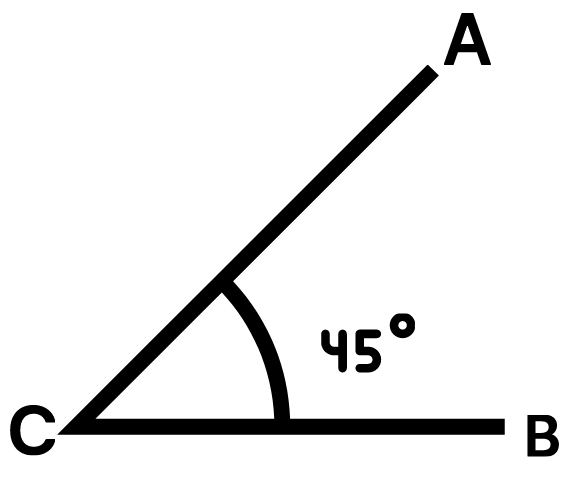Welcome, young math enthusiasts, to an exciting adventure in the world of angles! Today, we’re going to embark on a journey to discover the fascinating concept of acute angles. Get ready to unlock the secrets of acute angles and add some mathematical magic to your knowledge treasure chest! 🚀

Angle ABC: The Beginning of Our Adventure
Imagine a line that stretches across a piece of paper. Now, picture two rays originating from a common point on this line, forming a “V” shape. Congratulations! You’ve just created an angle. In our case, let’s call it angle ABC.
Acute Angles: The Shining Stars of the Angle Universe
Acute angles are like little rays of sunshine in the angle universe. They are special angles that measure less than 90 degrees. In simpler terms, they are smaller than a right angle, but still pack a punch when it comes to mathematical significance. If you can imagine a cute little puppy wagging its tail with excitement, that’s how we feel about acute angles!
How to Identify Acute Angles
Spotting an acute angle is as easy as pie! Here are some clues to help you recognize these marvelous mathematical creatures:
- Look for the “Less Than 90” Sign: Remember, acute angles are always smaller than 90 degrees. They can be any measurement between 0 and 90 degrees. So, if you see an angle that seems to fit snugly within a right angle, you’ve probably stumbled upon an acute angle.
- Visual Cues: Acute angles often appear sharp and pointed, like the tip of a pencil or the beak of a bird. If you can visualize a triangle with an angle that looks slim and slender, chances are it’s an acute angle.
- Angle Size Comparison: When you’re comparing angles, think about how they stack up against each other. If an angle is noticeably smaller than a right angle, it’s most likely acute.
Now that you have the secret detective skills to spot acute angles, let’s explore some real-life examples that will make your math adventure even more exciting!
Real-Life Acute Angle Adventures
1. Roofing Marvels
Next time you’re out and about, take a moment to look at the roofs of buildings. You’ll notice that many rooftops are made up of triangles. And guess what? The angles at the top of these triangles are often acute angles. These angles help the roofs stay stable and add a touch of mathematical elegance to the architecture.
2. Sporty Shenanigans
If you’re a sports enthusiast, acute angles are no strangers to you. Picture yourself playing your favorite sport. Whether you’re kicking a soccer ball, swinging a golf club, or shooting a basketball, the angles formed by your limbs and the equipment are often acute angles. Understanding these angles can help you fine-tune your game and score those winning goals!
Summing Up the Acute Angle Adventure
To summarize our journey into the marvelous world of acute angles, here are the key takeaways:
- Acute angles are angles that measure less than 90 degrees.
- Look for visual cues and size comparisons to identify acute angles.
- Acute angles can be found in various real-life scenarios, such as rooftops and sports activities.
Now that you’ve become acute angle experts, let your knowledge shine bright like a star! Keep exploring, keep discovering, and keep embracing the magic of mathematics. The world is full of amazing angles waiting to be explored, and you have the power to unravel their mysteries.
Happy math adventures, young mathematicians! 🌟